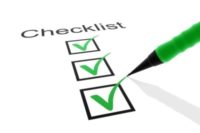1. Transfer to Green-certified cleaning products. This is probably the easiest step in the process; products that have been Green certified have a reduced impact on the environment and are made from more sustainable ingredients.
2. Select products based on their life-cycle assessment. Know the cradle-to-grave environmental impacts of everything purchased from the way the product is made to its environmental impact once disposed of.
3. Set sustainability goals.It is important to be goal-driven when it comes to sustainability; goals should focus not only on things such as reducing energy and fuel use by a certain time but reducing the costs of those consumables as well.
4. Employ a sustainability reporting system.You can't manage what you can't measure; you can't set goals if you have no way of knowing if you are achieving your goals. A sustainability dashboard system can track, monitor, and measure a facility's use of natural resources and consumables.
5. Get everyone involved. Becoming more sustainable involves everyone who is using or even visiting a facility. Make sure everyone knows the facility is making efforts to become more sustainable, and keep everyone informed regarding the progress made.
6. Create a sustainability culture. With everyone involved, encourage building users/visitors to suggest new and more ways to become more sustainable. Make it a collaborative effort; this is how a sustainability culture is born.
7. Make sustainability part of your brand.If your facility or organization is meeting sustainability goals and has made significant progress, integrate this information into business and marketing materials. Sustainability is now a part of who and what you are.

